
Alcione Dias Nazareth is also known as, "Alcione", and "A Marrom" is a Brazilian samba singer. She first gained international recognition in the late 1970 and has had nineteen gold records, as well as five platinum and double platinum records.

Samba is a lively dance of Afro-Brazilian origin in 2/4(2 by 4) time danced to samba music.
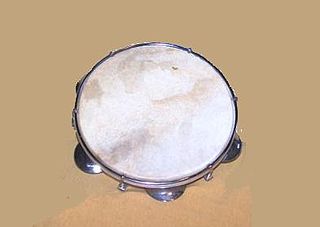
The pandeiro is a type of hand frame drum popular in Brazil. The pandeiro is used in a number of Brazilian music forms, such as samba, choro, coco, and capoeira music.

Jorge Duílio Lima Menezes is a Brazilian popular musician, performing under the stage name Jorge Ben Jor since the 1980s, though commonly known by his former stage name Jorge Ben. His characteristic style fuses samba, funk, rock and bossa nova with lyrics that blend humor and satire with often esoteric subject matter. His hits include "Chove Chuva", "Mas, que Nada!", "Ive Brussel" and "Balança Pema", and have been interpreted by artists such as Caetano Veloso, Sérgio Mendes, Miriam Makeba, Soulfly and Marisa Monte.
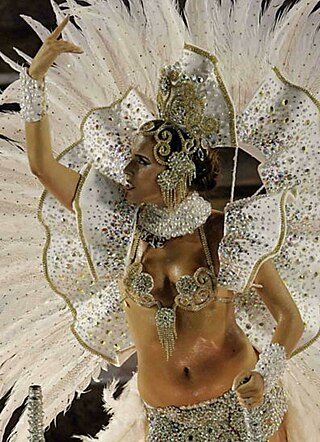
The Carnival of Brazil is an annual festival held the Friday afternoon before Ash Wednesday at noon, which marks the beginning of Lent, the forty-day period before Easter. During Lent, Roman Catholics and some other Christians traditionally abstained from the consumption of meat and poultry, hence the term "carnival", from carnelevare, "to remove meat."
Batucada is a substyle of samba and refers to a percussive style, usually performed by an ensemble, known as a bateria. Batucada is characterized by its repetitive style and fast pace. Like samba, the batucada is a Brazilian musical expression with African roots.
The National Heritage Fellowship is a lifetime honor presented to master folk and traditional artists by the National Endowment for the Arts. Similar to Japan's Living National Treasure award, the Fellowship is the United States government's highest honor in the folk and traditional arts. It is a one-time only award and fellows must be living citizens or permanent residents of the United States. Each year, fellowships are presented to between nine and fifteen artists or groups at a ceremony in Washington, D.C.

Marcos Suzano is a Brazilian percussionist known for playing with Brazilian and international musicians, such as Gilberto Gil, Nando Reis, and Titãs. He was born in Rio de Janeiro. Originally a rock fan, he witnessed a carnival bloco and became passionate about percussion. He settled on the pandeiro as his primary instrument after discovering Jorginho do Pandeiro of the choro group "Época de Ouro".
Jamey George Haddad is an American percussionist who works primarily in the fields of jazz and world music and specializes in hand drums.

Timbalada is an Afro-Brazilian musician group from Candeal, Salvador, Brazil. It was founded by drummer Carlinhos Brown, and the composer and percussionist Tony Mola. The musical style is between samba reggae and axé, with strong influences from African music. They are a highly popular group which regularly performs sold-out concerts throughout Brazil.

Clementina de Jesus was a Brazilian samba singer.
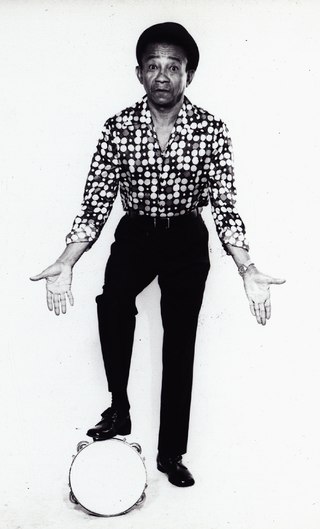
José Gomes Filho, more commonly known as Jackson do Pandeiro, was a Brazilian percussionist and singer. He is described by Allmusic as a key promotor of Northeastern Brazilian music and one of the most inventive and influential Brazilian musicians, though much of his recognition was posthumous.

Elaine Hoffman Watts was a klezmer drummer from Philadelphia, Pennsylvania, United States.
The Orkestra Rumpilezz is an orchestra of percussion and brass created in 2006 by Letieres Leite (1959-2021). The group's first album won the Bravo! Award for Best Popular Album of the Year 2010 and the Brazilian Music Award in the categories Best New Artist and Best Instrumental Group.
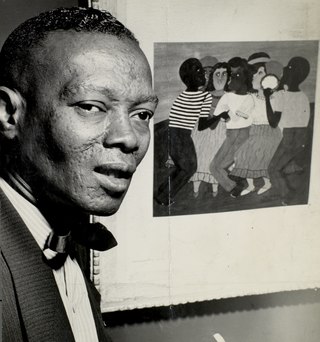
Heitor dos Prazeres was a Brazilian composer, singer and painter. He was a pioneer samba composer and participated in the first samba schools in Brazil. Later in life he became known by his paintings.
Neuma Gonçalves da Silva was a Brazilian samba dancer. She began dancing samba in a small group at age seven and was president of the Mangueira samba school for multiple terms, establishing the institution's children's and female's wings. Neuma housed several temporarily homeless people, and took some students to her home to learn to read and write through a literacy programme featuring local swear words invented by her. She was a member of the Superior Council of the Samba Schools throughout the 1960s and performed on four albums. A 2001 song about Neuma was written by the composer Arlindo Cruz and an overpass and school were named after her.

Nelson Sargento OMC was a Brazilian composer, singer, Brazilian popular music researcher, visual artist, actor, and writer.
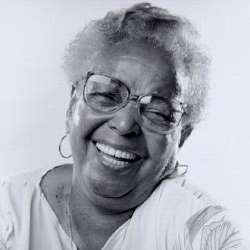
Euzébia Silva de Oliveira, better known as Dona Zica,, was a Brazilian samba dancer at the Mangueira Samba school in Rio de Janeiro, who went on to play an important role in the Mangueira favela.

Maria das Dores Alves Rodrigues, better known as Dodô da Portela, was a famous flag bearer for the Portela samba school, the most successful school in the annual Rio de Janeiro Carnival in Brazil.

Afro-Brazilian music consists of a mixture of musical and cultural influences from Sub-Saharan Africa, Portugal, and on a smaller scale, Amerindian music, creating a large variety of styles. Lyrics, instruments, and even melodies often have connections to African culture and even influence culture and music in other countries today. It is strongly influenced by African rhythms. The most well known sub-genres of Afro-Brazilian musical genres are samba, marabaixo, maracatu, ijexá, coco, jongo, carimbó, lambada, maxixe, and maculelê.















